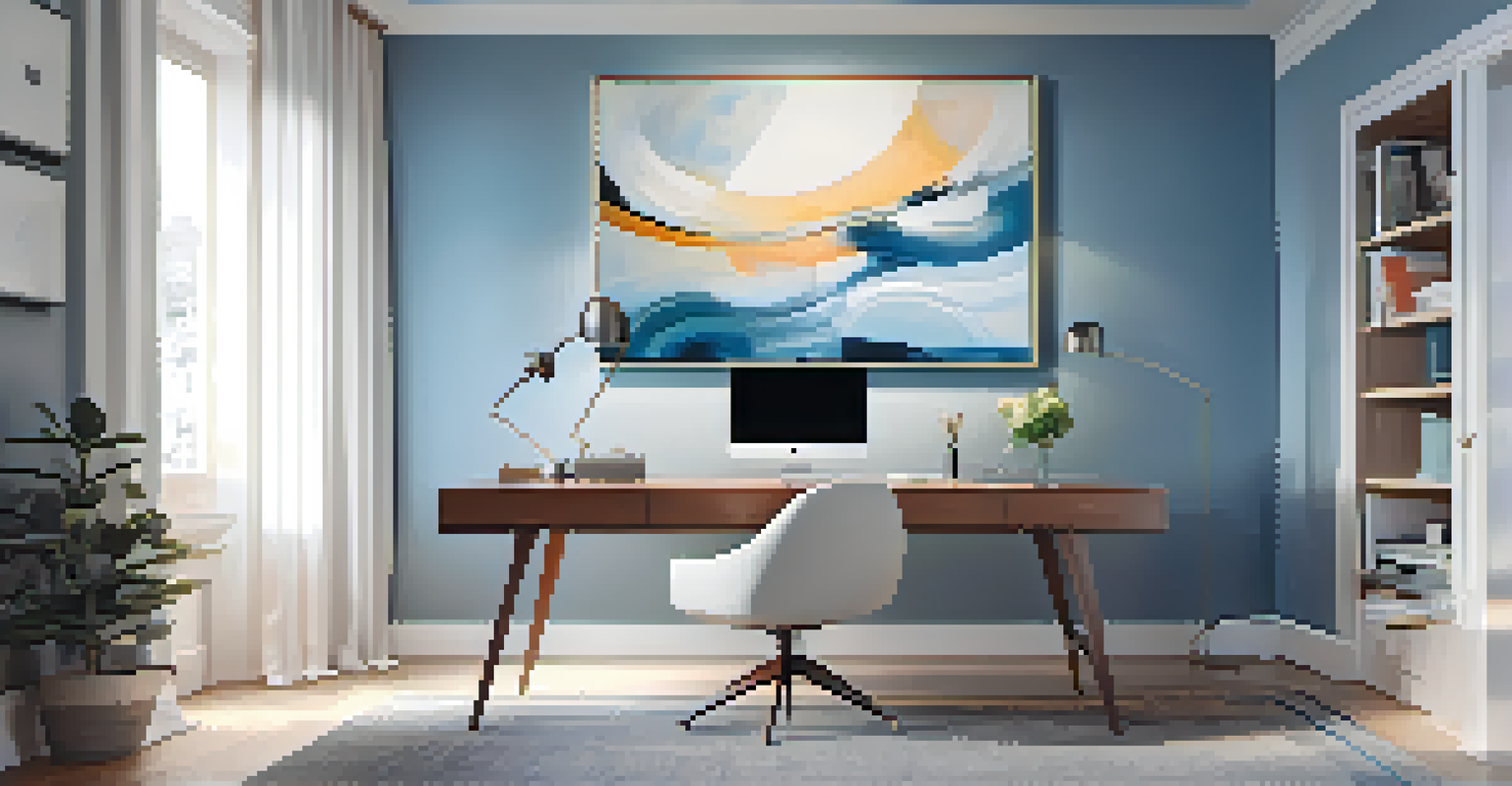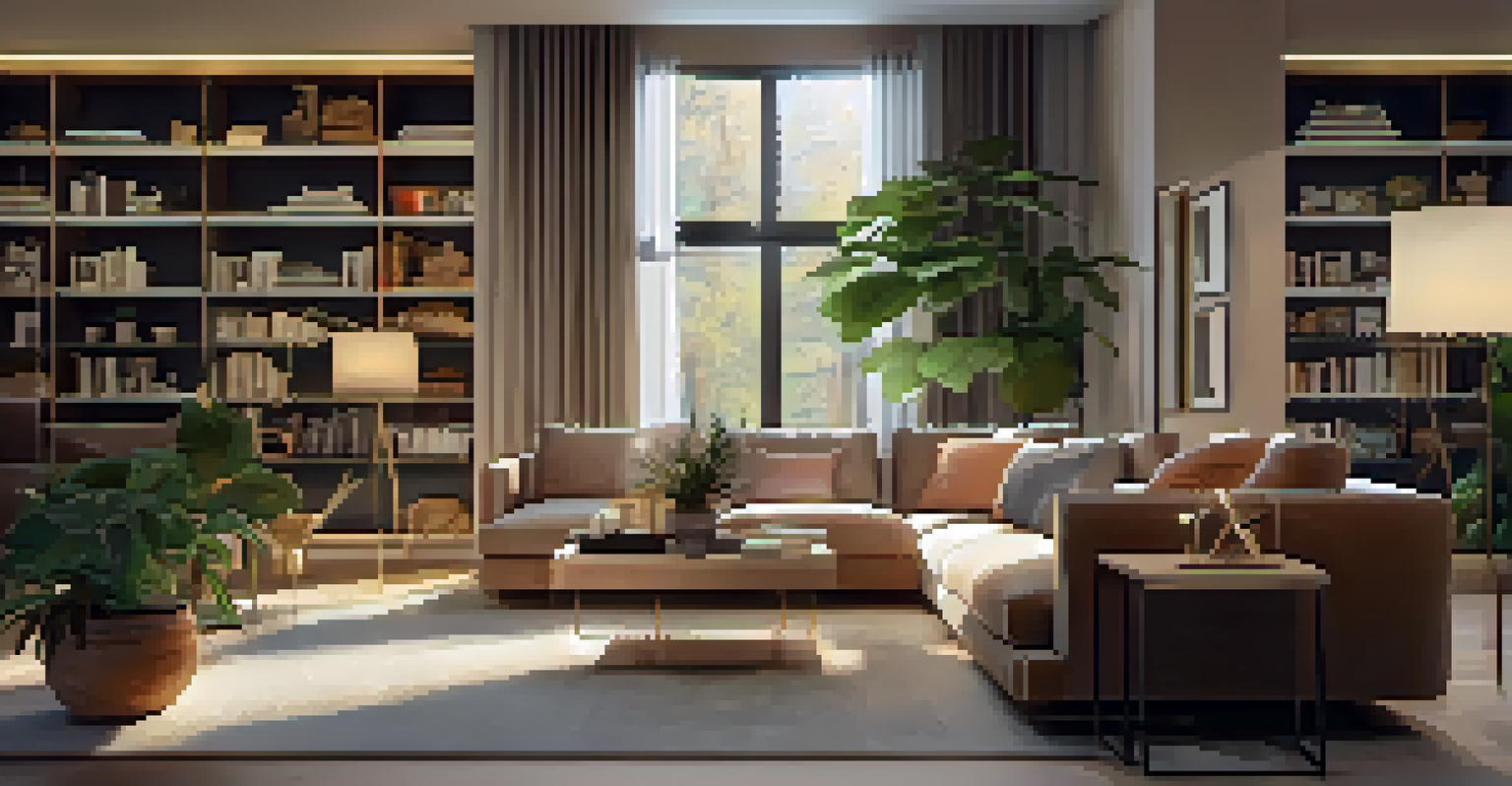Layered Lighting Techniques to Elevate Your Home's Style

Understanding Layered Lighting and Its Importance
Layered lighting is a design approach that combines different types of light sources to create a well-lit and inviting space. It involves three main categories: ambient, task, and accent lighting. By using all three, you can ensure that every area of your home is illuminated perfectly for its purpose.
Lighting is the foundation of design. It sets the mood, creates the atmosphere, and enhances the experience of a space.
Imagine walking into a room where the only light source is a single overhead fixture. It can feel harsh and uninviting. However, when you introduce various light sources, such as table lamps, wall sconces, and decorative fixtures, the room transforms into a warm and welcoming environment.
Ultimately, understanding layered lighting is about creating balance and functionality. By mixing light types, you not only enhance the aesthetics of your space but also improve its usability, making your home more enjoyable and comfortable.
Ambient Lighting: The Foundation of Your Room
Ambient lighting serves as the primary source of light in a room, providing overall illumination. This can be achieved through ceiling fixtures, chandeliers, or even natural light from windows. Think of it as the blank canvas of your lighting design.

For example, a well-placed chandelier in a dining room sets the mood for family dinners and gatherings. It provides enough light to see your food but can also contribute to a cozy atmosphere when paired with dimmers.
Layered Lighting Enhances Spaces
Combining ambient, task, and accent lighting creates a well-lit environment that balances aesthetics and functionality.
When designing your space, consider how ambient light can create a foundation that supports the other layers of lighting. It’s important to ensure that this type of lighting is bright enough to fill the room without being overwhelming.
Task Lighting: Function Meets Style
Task lighting is all about functionality, providing illumination for specific activities like reading, cooking, or working. This can include desk lamps, under-cabinet lighting in the kitchen, or focused lights over a vanity. Each serves its purpose effectively.
Good lighting can make or break a room. It's about creating a warm and inviting environment that reflects your personal style.
Imagine you’re at your kitchen island preparing dinner; under-cabinet lights can make chopping vegetables easier and safer. Similarly, a stylish desk lamp can not only brighten your workspace but also enhance your office decor.
When choosing task lighting, think about where you need the most light and how to integrate those fixtures seamlessly into your design. This will ensure that your space remains both practical and visually appealing.
Accent Lighting: Highlighting Your Home's Best Features
Accent lighting is used to highlight specific features or areas in your home, adding depth and interest to your overall design. This can include wall sconces, track lighting, or even strategically placed floor lamps that draw attention to artwork or architectural details.
For instance, if you have a stunning piece of art, using a spotlight to illuminate it can create a dramatic effect, making it a focal point in the room. Similarly, accent lighting can showcase beautiful textures or colors on walls, enhancing your home's character.
Choose Fixtures Wisely
Selecting the right fixtures for each lighting layer ensures they complement the room's purpose and overall design.
Incorporating accent lighting allows you to play with shadows and highlights, creating a dynamic atmosphere. This layer not only adds style but also brings personality to your space, making it feel uniquely yours.
Choosing the Right Fixtures for Each Layer
The choice of fixtures is crucial in achieving an effective layered lighting scheme. Each layer should complement the others in both style and function. When selecting fixtures, consider the room's purpose and the overall design aesthetic you wish to convey.
For example, sleek, modern fixtures might work well in a contemporary kitchen, while vintage-inspired lighting could enhance the charm of a cozy living room. Balancing these elements ensures that your lighting enhances rather than detracts from your decor.
Additionally, don’t forget to consider the color temperature of your bulbs. Warmer tones can create a relaxed atmosphere, while cooler tones might be better suited for task-oriented spaces. Finding harmony between fixture styles and light temperatures is key.
Layering Techniques for a Cohesive Look
To achieve a cohesive look with layered lighting, it’s essential to consider the layout and flow of your space. Start by identifying the key areas that require different types of lighting, ensuring that each layer serves its purpose without overwhelming the others.
A great way to visualize this is to use a floor plan and sketch out where each light fixture will go. This can help you see how different sources will interact and make adjustments as needed. Think of it as composing a piece of music, where each layer plays its part to create harmony.
Dimmers Add Flexibility
Incorporating dimmers allows for easy adjustment of light levels, enhancing the mood and functionality of your space.
Remember, layering isn’t just about adding more lights; it’s about thoughtfully integrating them to enhance your home’s style. With a little planning, you can create an inviting atmosphere that feels balanced and well-designed.
Using Dimmers for Enhanced Control and Mood
Dimmers are a fantastic addition to any lighting design, offering flexibility and control over the ambiance of your space. By adjusting light levels, you can easily switch between bright, energizing light for daytime activities and softer, more intimate lighting for evenings.
For example, in a living room, you might want bright light for reading during the day but a cozy glow for movie nights. Dimmers allow you to make those transitions effortlessly, enhancing the functionality of your layered lighting.

Incorporating dimmers can also prolong the life of your bulbs and reduce energy consumption. They provide not just a practical solution but also an opportunity to create a more dynamic and customizable atmosphere throughout your home.
Final Thoughts: Elevate Your Space with Layered Lighting
Layered lighting techniques are a powerful way to elevate your home’s style and functionality. By combining ambient, task, and accent lighting, you can create a space that is both beautiful and practical, tailored to your lifestyle and preferences.
As you explore your options, remember to consider the unique qualities of each room and how different light sources can enhance its features. Don’t hesitate to experiment with various fixtures, layouts, and light levels to find what works best for you.
Ultimately, layered lighting is not just about illuminating your space; it's about crafting an environment that reflects your personality and enhances your everyday life. So go ahead, let your creativity shine and transform your home into a well-lit haven!